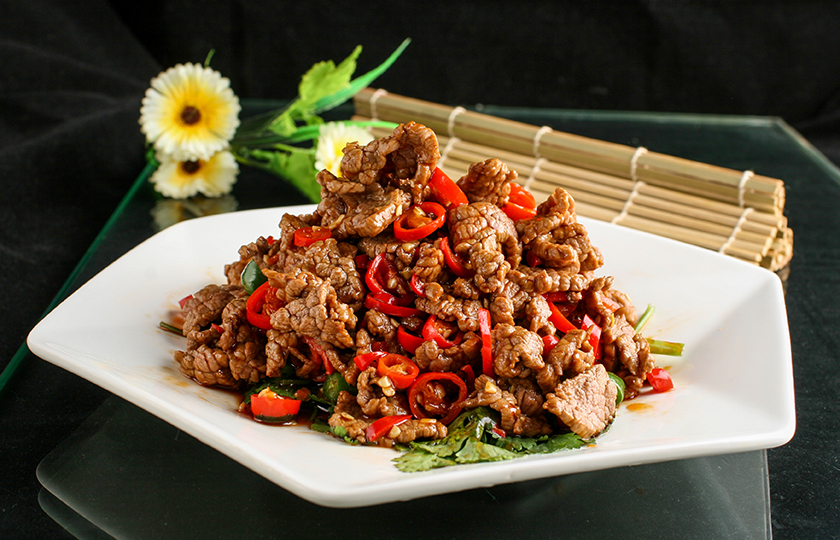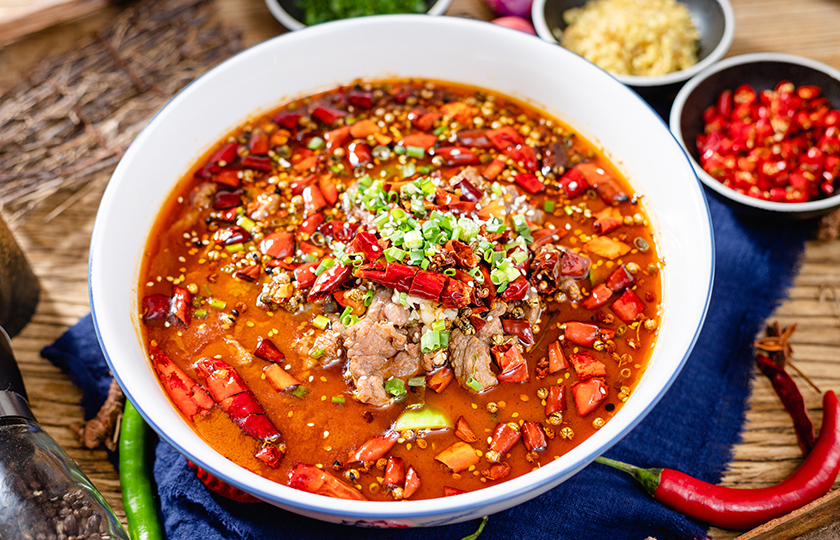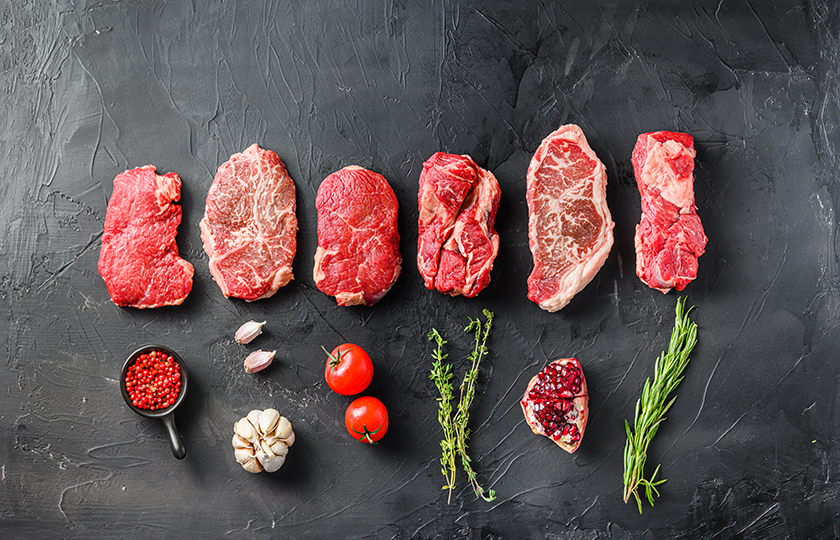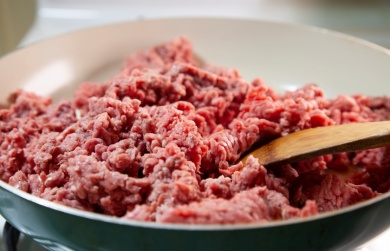Quick Guide: What is Hunan Beef vs Szechuan Beef

The difference between Hunan beef and Szechuan beef is manifested in the fresh and spicy taste versus the numbing and spicy taste in terms of flavor, and also reflected in the cooking methods of quick stir-frying and slow stewing.
The beef in both places has its own characteristics. From cooking methods to eating habits, they all show unique local cultures.
Taste characteristics
Speaking of beef from Hunan and Szechuan, although both are famous for their spiciness, the taste when eating is very different.
The characteristic of Hunan beef is its direct spiciness. When taking the first bite, one can feel the strong taste of chili peppers, combined with the fragrance of garlic and the fresh taste of meat.
Chefs mainly use fresh chili peppers and dried chili peppers to season, maintaining the original taste of beef while making it full of spiciness.
The taste of Szechuan beef is more complex. First, one will feel the numbing sensation brought by Szechuan peppercorns, and then the spiciness.
Chefs in Szechuan will use chinese spicy bean paste and various seasonings. These seasonings make the taste of beef more abundant. One bite of beef can taste the combination of numbing, spiciness and many other flavors.
In short:
Hunan beef: strong spiciness, simple and direct taste
Szechuan beef: numbing and spicy, with a richer taste
Both styles of beef are very popular. Which one to choose mainly depends on an individual's preference for spiciness.
Cooking methods
The ways chefs in Hunan and Szechuan cook beef are very different.
Chefs in Hunan like to cook quickly. They will cut beef into thin slices, simply marinate it for about 10 minutes, and then stir-fry quickly over high heat. The whole process only takes 5 to 10 minutes. Beef cooked in this way will remain fresh and tender.
Chefs in Szechuan prefer to take their time. They usually cut beef into small pieces and marinate it for an hour or more to let the seasonings fully penetrate the meat. When cooking, they first boil over high heat and then turn to low heat and simmer slowly.
Generally, it takes 20 to 30 minutes. Beef cooked in this way will be more flavorful and have a softer texture.
Main cooking methods:
Hunan: stir-fry quickly
Szechuan: simmer slowly, cook in soup, stir-fry for a long time
Both methods are very delicious, just with different styles. If you like beef with a soft and tender texture, you can try the Hunan style. If you like beef with a rich flavor, the Szechuan style would be a good choice.

Ingredient combinations
When it comes to beef in Hunan and Szechuan, just the ingredients can make people distinguish their differences.
Hunan's method is relatively simple and straightforward:
Can't do without chopped red peppers, paired with garlic and ginger.
Likes to be paired with fresh green peppers and string beans.
Sometimes a little Chinese chives or celery are added.
Szechuan's ingredients are more particular:
A must-have is chinese spicy bean paste, that kind of salty and spicy bean paste.
The characteristic is to add Szechuan peppercorns, which will give a numbing feeling.
Often paired with bean sprouts, lettuce or potatoes.
If you want to try:
If you like a refreshing taste, it is recommended to try Hunan's first.
If you want a rich taste, you can choose Szechuan's.
No matter which one you choose, you can eat different deliciousness. Remember, Hunan's is more fresh and Szechuan's is more fragrant and rich, each with its own characteristics.
Representative dishes
When it comes to famous beef dishes in Hunan and Szechuan, each place has its own characteristics.
The most famous in Hunan is beef with chopped peppers. Fresh chopped peppers and tender beef are stir-fried quickly, extremely spicy and with tender meat. Another dish, beef stir-fried with green peppers, is also very popular.
Stir-frying quickly over high heat keeps the original deliciousness of the beef. There is also sour and spicy beef. After adding vinegar, it is both spicy and appetizing. Many people love to order this dish.
The most famous in Szechuan is boiled beef. It seems to be a large basin of red oil soup, but when eaten, it is numbing, spicy, fragrant, and the beef is tender and flavorful. Couple's lung slices in cold dishes are also a must-order dish.
Braised beef paired with red oil makes people take one bite after another. Stir-fried shredded beef is another style. Stir-frying slowly until the beef is slightly charred and fragrant, with a particularly strong spicy taste.
If you try for the first time:
If you like refreshing and spicy, it is recommended to try Hunan's beef with chopped peppers first.
If you want to experience the numbing and spicy taste, you can start with Szechuan's boiled beef.

Nutritional value
Beef in Hunan and Szechuan not only tastes different but also has different nutritional values. This is mainly because their cooking methods are different.
Hunan beef is stir-fried quickly for a short time, so:
The protein in the meat is better preserved.
The fresh vegetables such as green peppers and string beans paired with it are rich in vitamins.
Because it is stir-fried quickly, it absorbs less oil and has relatively low calories.
Szechuan beef likes to be slowly stewed for a long time. Therefore:
The nutrients in the meat are fully dissolved in the soup and are especially easy to be absorbed by the body.
Long-time stewing makes the collagen dissolve out, which is very good for the skin.
But because it is stewed for a long time, it will absorb more oil and seasonings and have a higher calorie content.
If you care about health:
It is better to eat Hunan beef before exercise because it is easy to digest.
When you want to supplement nutrition, Szechuan beef is a good choice.
No matter which one you choose, pay attention to moderation and don't be greedy.
Remember, no matter how good the food is, it should be consumed in moderation. Combining with other dishes is healthier.
Regional characteristics
Due to different geographical environments and breeding methods, beef in Hunan and Szechuan has formed distinct characteristic differences.
Hunan beef mainly comes from hilly and rainy areas. Local breeds such as Xiangxi Yellow Cattle and Nanyang Cattle are the main varieties. They are mostly raised freely on mountains by small farmers. This natural free-range way makes the beef form a lean and firm meat quality characteristic, which is especially suitable for quick cooking.
Szechuan beef is produced in the Szechuan Basin area. Mainly raising Western Szechuan Yellow Cattle and Big Bone Cattle, and mostly adopting modern large-scale breeding. This refined breeding method makes the fat and lean distribution of beef more even and the taste more tender, which is especially suitable for slow cooking.
Food culture
The differences in beef between Hunan and Szechuan actually reflect the different food cultures of the two places.
People in Hunan like the fresh and spicy taste. They think that good beef should maintain its original freshness and be paired with strong spiciness.
At the dining table, people in Hunan like a fast-paced dining style. As soon as the steaming hot beef is served on the table, it should be eaten while it's hot. They emphasize that it tastes best right after being cooked.
This eating habit also affects their way of cooking beef. Quick stir-frying is often used to maintain the fresh taste of ingredients.
People in Szechuan pay more attention to the complete experience of numbing, spicy, fragrant, and delicious. They think that a good beef dish needs to be fully flavored, and seasonings should be perfectly integrated with beef.
People in Szechuan eat more leisurely. They will taste slowly and enjoy the multi-level flavors in beef. This is also why beef in Szechuan often needs a longer time to cook so that the ingredients can fully absorb the flavor of the soup.
Differences in dining habits:
Hunan: Emphasize eating while it's hot and enjoying quickly.
Szechuan: Stress savoring slowly and enjoying the process.
These differences show the unique food cultures of the two places and also help us better understand why the same beef can have such different cooking methods and tastes in different places.























